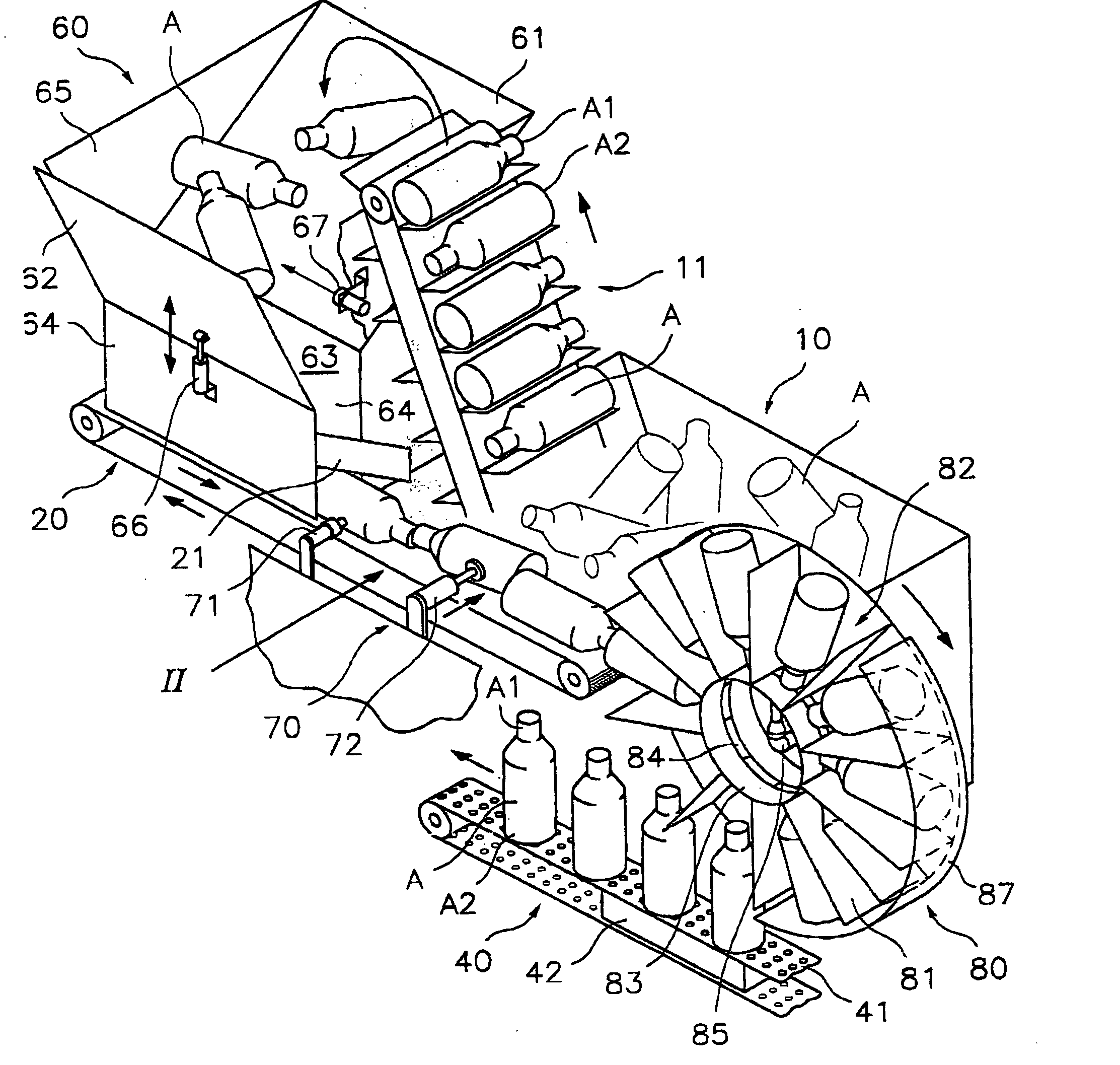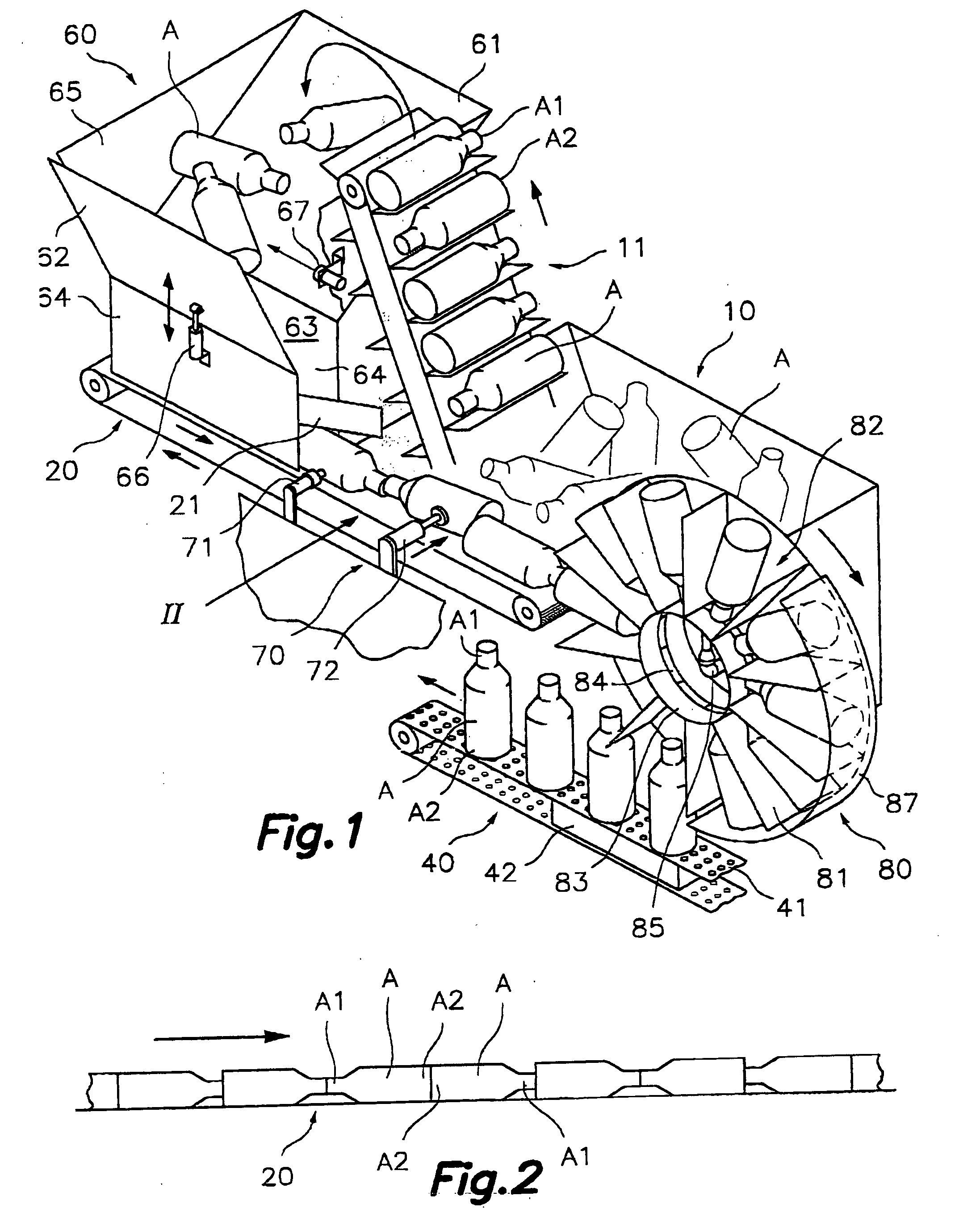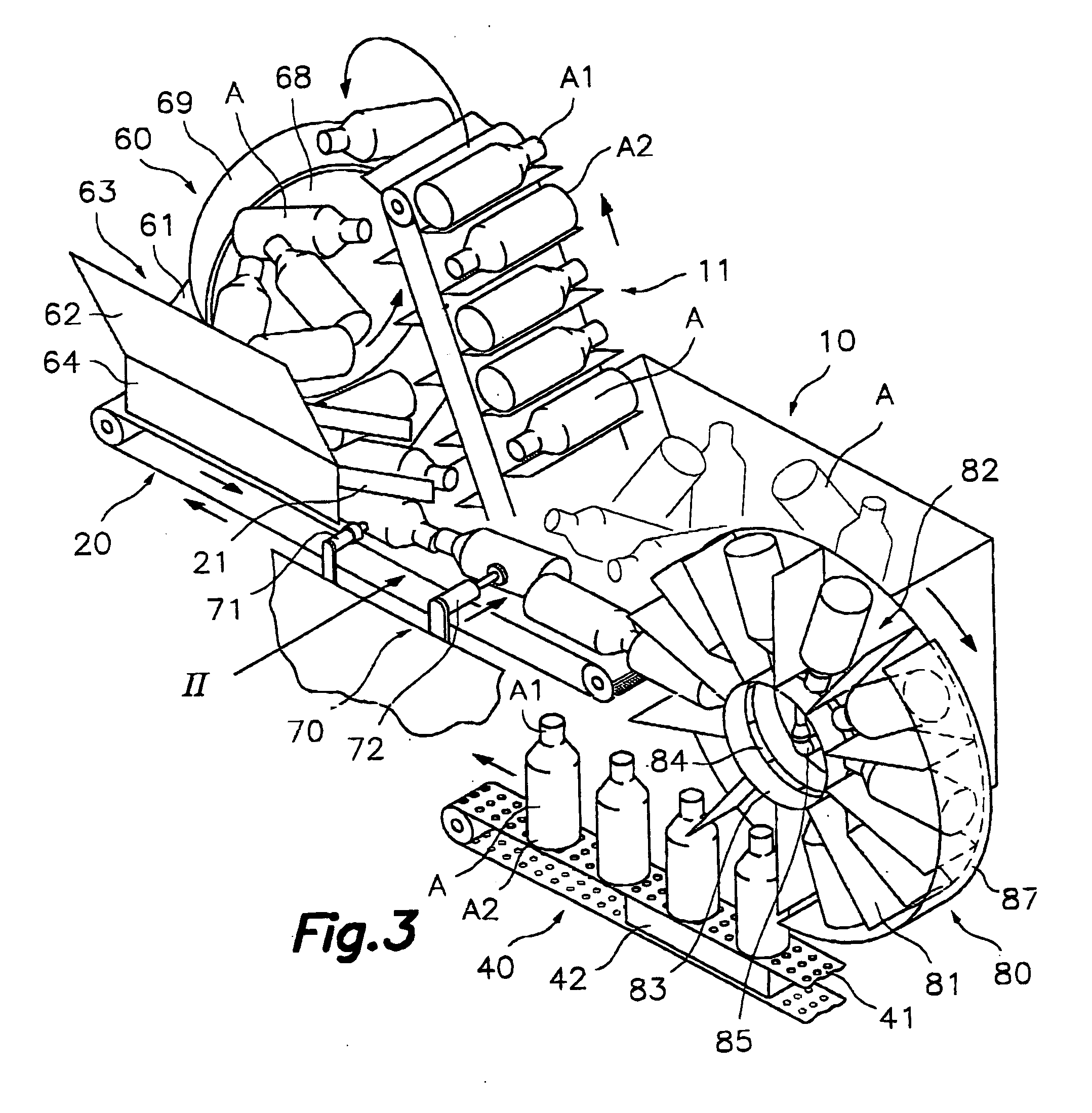Automatic linear machine for orienting and aligning articles
a linear machine and article technology, applied in the direction of conveyor parts, conveyors, transportation and packaging, etc., can solve the problems of large machine size, serious limitation of the variety of articles or packages, and high operating and maintenance costs, so as to reduce purchases and running costs, and the effect of small dimensions
- Summary
- Abstract
- Description
- Claims
- Application Information
AI Technical Summary
Benefits of technology
Problems solved by technology
Method used
Image
Examples
Embodiment Construction
[0050] The figure make use of numeric references that are the same for those equivalent parts in the various construction examples and variants.
[0051] First referring to FIGS. 1 and 7, the automatic linear machine for orientating and aligning of this invention is intended for articles A of the type where is a differentiated geometric configuration A1 at one of the ends, such as bottles with necks.
[0052] The machine essentially consists of a container 10 for such articles A arranged in a disordered bulk manner; a linear conveyor 20 for articles A coming from container 10 in a low arrangement, pre-orientated in a longitudinal direction, with the described differentiated geometric configuration A1 already located either at the front or the rear, with respect to the direction of travel of this conveyor 20; a positioning station 30, 80 connected to the conveyor 20 in order to place articles A in a vertical position; together with some means of exit conveyor 40 for articles A orientated i...
PUM
 Login to View More
Login to View More Abstract
Description
Claims
Application Information
 Login to View More
Login to View More - R&D
- Intellectual Property
- Life Sciences
- Materials
- Tech Scout
- Unparalleled Data Quality
- Higher Quality Content
- 60% Fewer Hallucinations
Browse by: Latest US Patents, China's latest patents, Technical Efficacy Thesaurus, Application Domain, Technology Topic, Popular Technical Reports.
© 2025 PatSnap. All rights reserved.Legal|Privacy policy|Modern Slavery Act Transparency Statement|Sitemap|About US| Contact US: help@patsnap.com



